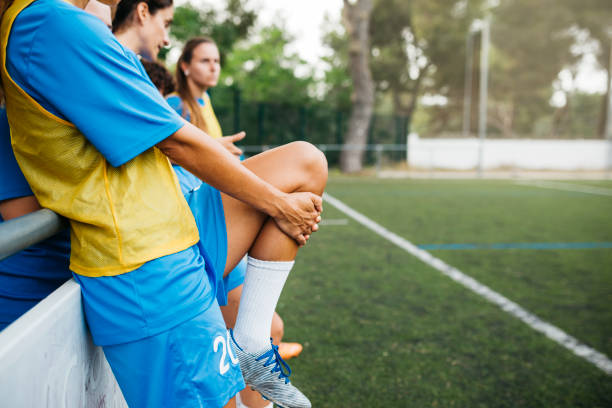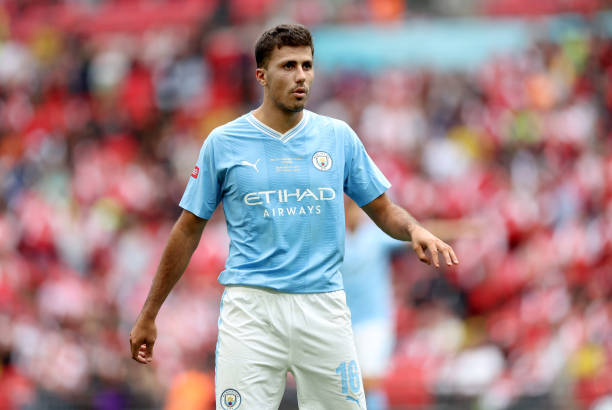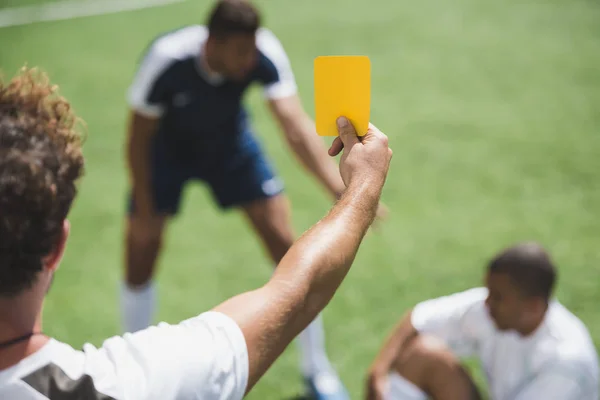Avid fans of soccer know that the knees are one of the more vulnerable and most injured parts of the body for professional players.
Due to the nature of the sport, which requires athletes to change direction and pace rapidly, the knees and ankles take a toll and can easily get damaged in play.
Along with that, the strenuous schedule, which requires footballers to play more than two matches per week for most of the season, doesn’t help with the prevention of injuries.
To top it all off, soccer is also a contact sport, and tackles present yet another way to hurt the knees and get injured.
What are the Most Common Knee Injuries In Soccer?
Before we go to preventing injuries, let’s first discuss some of the most common knee injuries in soccer and what can cause them.
ACL Injuries
During last year’s Women’s World Cup, more than five stars of the game were unable to compete due to ACL tears – including England captain Leah Williamson and star striker for the Netherlands, Vivian Miadema.
On the men’s side, ACL tears are also frequent, and many of the biggest names have suffered one at least once in their careers.
These injuries are typically caused by rapid changes of direction, sudden stops, and also from tackles, so it’s easy to understand why they happen so often. You can read up on the famous football players who have had ACL injuries.
Meniscus Tear
The meniscus is a C-shaped disc that cushions the knee, and each knee has two menisci that work as a kind of shock absorber.
Tears usually happen when the pressure outweighs the shock that the meniscus can bear.
These injuries occur when players are twisting and turning quickly, especially when the knee is bent, and can also happen during weightlifting training. Here are some popular soccer players who have torn their meniscus.
Patellofemoral Pain Syndrome
This is also called runner’s knee, and it typically occurs due to stress from running – simply explained it’s a pain that’s consistently felt at the front of the knee.
It happens due to repetitive stress on the knee joint, muscle imbalance when the muscles around the knee and hip can’t keep the kneecap properly aligned, and trauma to the kneecap, such as dislocation or fracture.
How To Prevent Knee Injuries
We have to preface this by saying that nothing can guarantee that you won’t ever get a knee injury – risky tackles, overworking the knees, and sharp twists and turns can always lead to some form of a knee problem, and there’s no way to prevent 100% of the potential injuries.
With that said, there are measures you can take to make sure that it’s more difficult for your knees to get injured, and we’re going to take a more in-depth look at what they are now.
Do Lighter Cardio
Running a lot isn’t good for the knees, and one way to prevent injuries as a soccer player is to minimize running as much as you can.
Given the fact that every game and practice session requires running in one way or another, the extra cardio you do – for recovery and for warm-ups can be done on the exercise bike, more specifically, the seated type, which is a great form of low-impact cardio.
Don’t Forget to Always Warm-Up, Cool Down and Stretch
According to research, cold muscles are more injury-prone, so avoiding that scenario is a must, regardless of the sport you play.
For soccer players, poor muscle flexibility is also a factor that can lead to pain, tenderness, and more soreness after intense practice sessions and games.
The thing is that unlike other sports, such as gymnastics, soccer players don’t develop flexibility as part of their routine and need to work on it additionally off the field.
That’s why it must become a part of your daily routine as a player to always warm-up before training and games, cool-down after them, and then stretch in your free time.
Do Hip Abductor Exercises
The hips and the knees are connected, and it’s a fact that the hips have a ton to do with the movement of the knee and the prevention of injuries.
For example, if you have weak hip abductors, that can cause knee injuries as they allow the thighs to twist inward as you run, which in turn affects the knee joints.
The worst thing is that you won’t even notice that this is happening until it’s too late and the injury is a fact. What you can do to prevent this scenario is train the hip abductors with exercises such as lateral resistance band walks, which can help develop both strength and mobility.
Don’t Forget Protective Gear
For soccer players, wearing protective gear is key to preventing injuries. That includes always having your cleats on, as well as wearing shin guards and leg guards, which can help protect you whenever you get tackled hard or when contact occurs during the game.
It’s vital to feel comfortable with all of the gear on and to ensure that it’s properly put on so that it actually protects your legs during the game.

Conclusion
Hopefully, this article has helped you learn more about why knee injuries occur in soccer and what you can do to prevent them as an active player.
Again, you have to remember that you can’t protect yourself 100%, as the sport is unpredictable, and you should never play it with fear, but if you take the measures we discussed, it’s more likely to avoid any major injuries.







